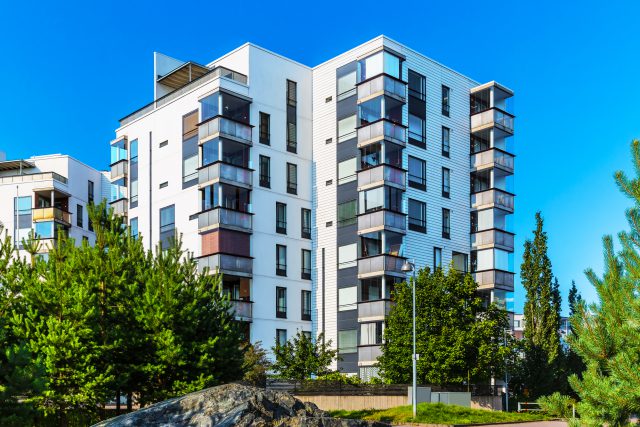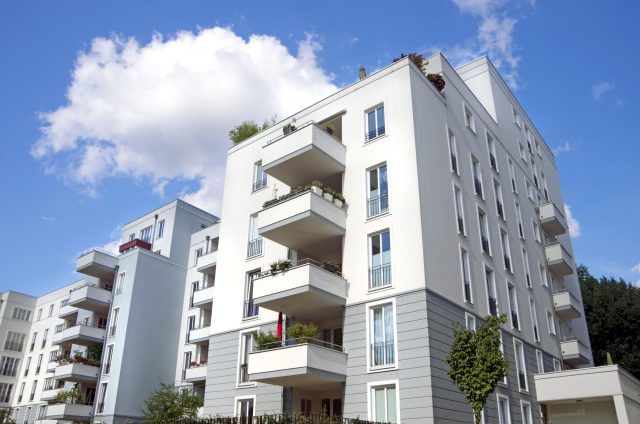It’s official. The latest round of CPI numbers are in. The good news is that annual inflation has reduced from a high of nearly 8% p.a., to only 4.9%. While this is still above the Reserve Bank’s target band of 2-3%, inflation is certainly heading the in the right direction. Financial markets are now predicting we might even see interest rate reductions this side of Xmas, which will be welcome relief for struggling Australian households.
In some spending categories, such as clothing, prices have barely increased over the past year. In contrast, there are other categories where prices have increased substantially. One of those is rent. A year ago, rents were expensive. And now, they are even more expensive. So, what is driving this, and what can be done about it?
The reason rents are rising is quite simple. Our population is increasing, and the number of residences hasn’t grown enough to keep pace. It’s a simple case of demand growing faster than supply.
Let’s analyse some common proposed solutions:
1. Rental Caps
It has been suggested that the government could mandate rent caps. This could take a number of forms, with the most common suggestion being a limit on annual rent increases (eg 5% p.a.) for existing tenants.
At first it might sound sensible. But let’s look at the consequences:
(a) Landlords would evict tenants who were paying less than market rent, so they could find a new tenant at a higher rent
(b) Landlords would have little incentive to attend to repairs and maintenance, so tenants would live in worse conditions
(c) Landlords would be less likely to buy investment properties, so the supply of rental accommodation would reduce. In the long term this would push rents up further, resulting in the exact opposite of the intended effect.
In other words, Rental Caps Won’t work.
2. Restrict the Short Term Rental Market
Many property owners have transitioned from long term rentals towards short term rentals. That is, instead of advertising their properties for 12 month leases on realestate.com.au and domain.com.au, they advertise the same properties on airbnb.com. This reduces the number of rental properties available for residents, which pushes rents up.
Some have suggested restricting short term rentals which will push more properties back into the long term rental market. This change can certainly help reduce rents to an extent, however it can also restrict tourism and therefore create unemployment.
3. Increase Interest Rates to fight Inflation
When inflation is high, what does the Reserve Bank do? They increase interest rates. Anyone with a mortgage is bearing the pain of this right now.
Increasing interest rates increases the cost of owning property. With owners not being able to afford to buy new properties, developers build less new houses. Which means higher rents.
Therefore, ironically, increasing interest rates can actually push up rents further.
4. Reducing immigration
Yes, we could reduce immigration and that would reduce pressures on housing. However, we take in immigrants for a number of reasons:
(a) Immigrants help us grow the economy. The more people we have in Australia, the more scale we have in the economy, and the more opportunity there is for business and their employees to thrive
(b) Immigrants often bring required skills into the country. For example, many builders are immigrants and without them we can’t build more houses. This is why, when immigration was cut off due to COVID, many Australian businesses complained about not being able to hire enough employees.
(c) Immigrants often come to Australia for social regions such as escaping oppression and family reunions. It would be unfair to stop this.
What’s more, our current immigration intake is catching up on minimal immigration during the COVID period. Don’t expect the immigration tap to be turned off any time soon.
5. Convert Offices into Residential
With more people working from home, we have many empty and under-utilised offices in our CBDs. Some of these office buildings could be converted to residential buildings.
In reality, this is happening and will continue to happen. However the pace will be slow.
Furthermore, this will happen as a result of market forces, it won’t be driven by government.
6. Encourage people to move to regional areas
If given a choice, many people want to live in Sydney and Melbourne. That’s where the highest paying jobs are, that’s where the amenities are, that’s where the action is.
If the government encouraged people to move to regional areas, it would take the pressure off our largest cities. There could be direct incentives (eg subsidised relocation costs), or the government could create jobs in those regions. For example, they could move call centres and administrative departments out of the major cities into regional areas.
Of course, this only works if there is spare housing capacity in those regional areas. The capacity must be created first. That is, it requires a long-term plan. And which governments think long term?
7. Removing Financial Dis-incentives to Downsize
As people reach retirement, and their children move out of home, it makes sense for them to downsize. After all, why do empty nesters still need to live in the 4 bedroom family home?
However, there are 2 financial incentives for many in this situation stay put:
(a) The Age Pension Assets Test excludes the family home. That means that if a retired couple sells the family home and moves into a cheaper apartment, they will receive less age pension each year.
(b) In most states, the couple will have to pay stamp duty when buying the apartment. This eats into the cash released by downsizing.
These dis-incentives can be removed by:
(a) Including the family home in the assets test. (This will have other benefits as well), and
(b) Replacing Stamp Duty with a land tax.
However, these changes come with political risk. Once again, don’t expect rapid progress here.
Removing Restrictions from Development Applications
In reality, it is hard and slow to get property development approved. There are lots of rules which are designed to protect neighbouring residents. At the same time, these rules are reducing the number of new houses.
The single best thing we can do to reduce rents is to allow more houses to be built. That means many of us need to accept higher housing density around us. It could mean more noise, more traffic, or less sun. That’s the price we will have to pay as a society if we want housing to be affordable.
It is those same home-owners who don’t want noise or traffic, who vote for their local governments. No wonder we continue to see a shortage of housing.
The implication for Landlords
So, what does all this mean for Landlords?
Firstly, nothing is going to change quickly. Rents will remain high and may continue to increase. And there will continue to be many properties where tenants are paying significantly less than market rent, because the rent increases haven’t matched the market.
Landlords should be vigilant in:
(a) Collecting data to understand the market
(b) Increasing rents where the current rent is below market
(c) Balancing rent increases with a recognition that if rents are increased too much too fast, good tenants will leave. It isn’t easy to get the balance right, and those landlords that make the effort to get this right will be rewarded.
Of all landlords, Build to Rent Operators are best placed to optimise their rent, due to the quantity and quality of data available. The most successful Build to Rent operators will be the ones that can use their data consistently and effectively.
Nonetheless, we have seen that most Build to Rent operators aren’t adjusting their prices as often or effectively as they could, and are missing out on millions of dollars p.a. as a result. Hopefully this article provides a timely reminder of the potential upside from pricing correctly.
So, with that in mind, it’s time to update your prices. Now.





